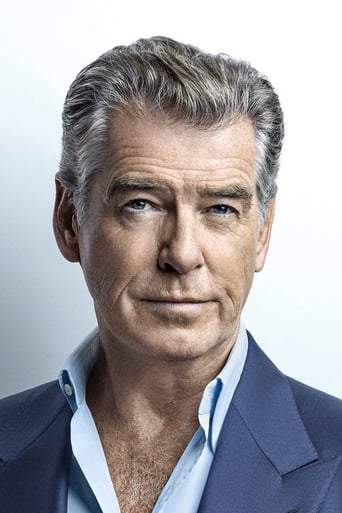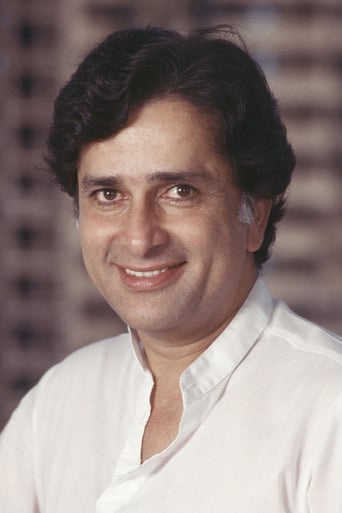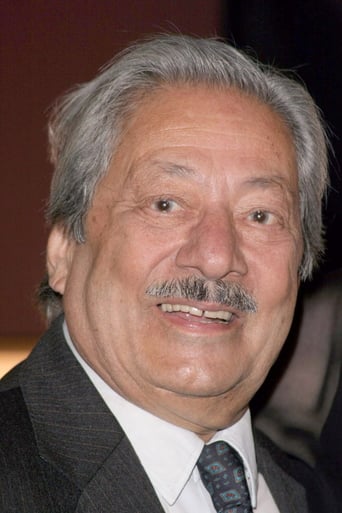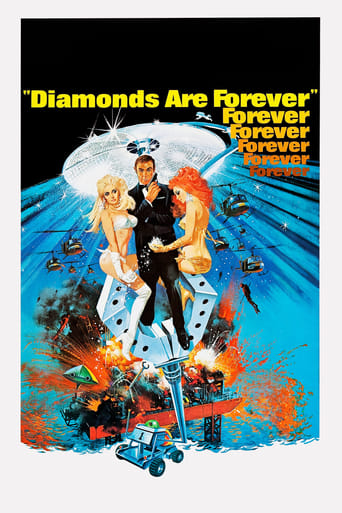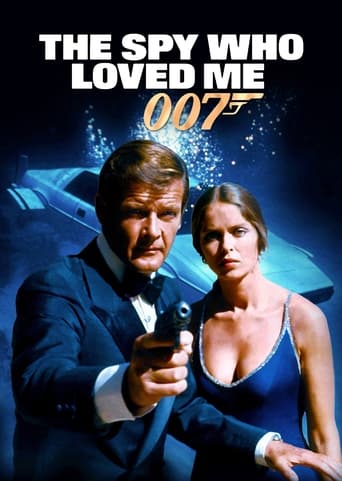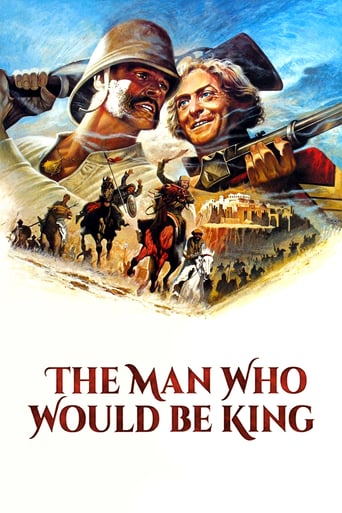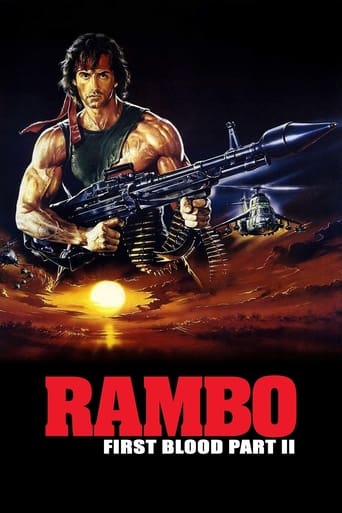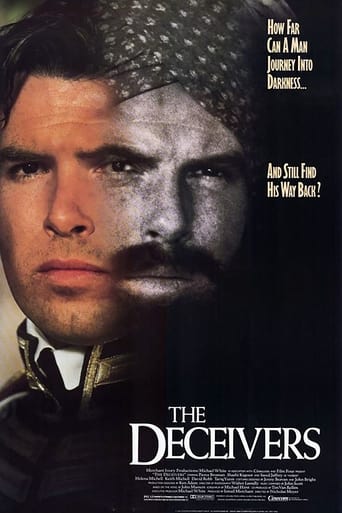

The Deceivers (1988)
India, 1825: the country lives in mortal fear of cult members known as the “Deceivers." They commit robbery and ritualistic murder. Appalled by their activities, an English military man, Captain William Savage, conceives a hazardous plot to stop them. In disguise, he plans to himself become a “Deceiver” and infiltrate their numbers. Ever present in Savage’s adventures is a sense of dread; he is in constant fear of betrayal and vengeance and also undergoes a disturbing psychological transformation as he experiences the cult’s blood lust firsthand.
Watch Trailer
Cast
Similar titles
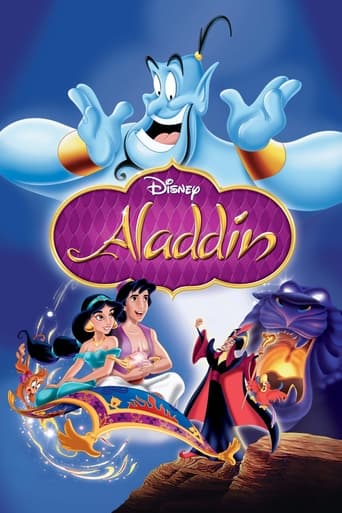
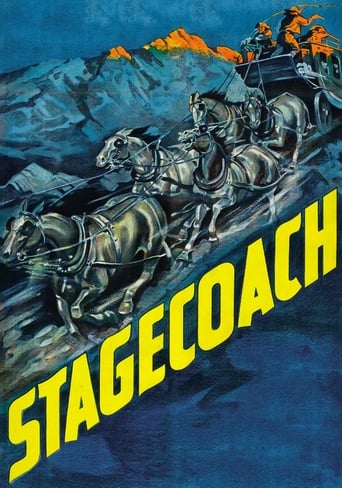
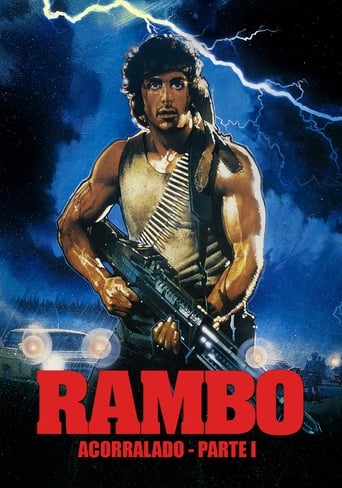
Reviews
The first must-see film of the year.
The acting is good, and the firecracker script has some excellent ideas.
The movie turns out to be a little better than the average. Starting from a romantic formula often seen in the cinema, it ends in the most predictable (and somewhat bland) way.
Worth seeing just to witness how winsome it is.
"Every empire tells itself and the world that it is unlike all other empires, that its mission is not to plunder and control but to educate and liberate." - Edward Said "The Deceivers" is a poor film by the usually reliable Nicholas Meyer. Whitewashing the actions of the British Empire within Asia, the film is set in 1820s India and stars Pierce Brosnan as Captain William Savage, a tax collector for the British East India Company. As the Thuggees, a Kali-worshipping cult, have been committing robberies and mass, ritualistic murders, Savage infiltrates the group and attempts to put an end to their crimes.Nicholas Meyer's not an idiot. His film clearly attempts to attack the paternalistic, condescending and bloody attitudes of the British Empire, which, largely in collusion with private mercantile corporations, would result in the indirect or direct deaths of over a billion Indians across a roughly 2 century period.And so "The Deceivers" initially portrays Savage as the poster-boy for "liberal enlightenment". He's a "good Imperialist", a "good tax collector", who has many Indian friends and speaks several local languages. Once he infiltrates the cult, however, Savage "becomes a savage". Savage not only puts on brown face-paint in an attempt to go undercover and so infiltrate the cult, but he "literally reveals himself to have always been a barbarian" who enjoys murder, death and sexual debauchery. Under the facade of the civilised white man, Meyer thus says, is third world primitivism. Is a monster adept at deceiving itself. These themes are made clearest during sequences in which Meyer cuts between Thuggee rituals and Savage's memories of Western church ceremonies, no less a form of primitive superstition.Whilst such themes may work in David Lean's "A Passage to India", they don't work at all in "The Deceivers". The film's stance – beneath "civilised" Europe lurks the barbarism of the "native" - is sophomoric, dilutes the larger aims and horrors of Imperialism, and has the unintentional effect of demonizing the Indians. The film also unintentionally validates an old Victorian trope: the idea that the Empire, for all its problems, was nevertheless necessary for taming the native, the frontier and conflicting groups. The Empire, then, brought order.Whilst it is true that the Empire did bring a type of order (it crushed many monarchs and gangs), it also practised divide and conquer, sowed disorder and fuelled rivalries. Similarly, the "peaceful order" it brought was pretty undesirable. Most of the regions ruled by the British at the time only got worse. West Bengal, Bihar, Assam, Uttar Pradesh, East Bengal etc were the poorest, most lawless states, ridden with ethnic conflicts and disease. Even today, these parts lag behind the rest of contemporary India. Those places once ruled by Indian monarchs during the 1700s and 1800s (Travancore-Cochin, Mysore, Hyderabad, Gujarat, Rajasthan, Punjab-Haryana etc), in contrast, now exhibit stronger economic and social progress. In short, European colonialists were much more adept at exploitation and extraction than local feudalists.The name Thuggee comes from the Sanskrit word for "deceiver". In the 1830s the group is said to have killed about 30,000 people. Historians like Martine van Woerkens ("Colonial Imaginings and the Thugs of India"), however, have contested much of the mythology ascribed to the Thuggees. Many see the group as being largely a product of "colonial imaginings": British fears of the little-known interior of India. Afterall, the British in India found themselves culturally isolated. Most had grown up in an England where public meetings were illegal and where the faintest hint of social gatherings or secret brotherhoods were sufficient to arouse draconian reactions. A combination of paranoia, authoritarian instincts and religious intolerance thus gave way to a kind of militant zeal for Thugg-bashing. Even historians who agree that the Thuggees were real and genuinely responsible for mass murders, like Mike Dash, reject the colonial emphasis on religiously motivated crimes, and instead asserts that monetary gain was the main motivation for Thuggee murders; the gangs were in extreme poverty, and were a natural result of British rule in India (and the economic realities generated by the Empire's opium trade)."The Deceivers" is poorly shot and never convincingly captures the tempo, look or feel of 19th century India. The attitudes, mannerisms and dialogue of virtually all of Meyer's cast also rings false. Elsewhere the film struggles to reconcile two goals: being a Victorian boy's adventure (which were typically racist and paternalistic), and being a politically correct condemnation of Empire. Meyer would attempt similar themes with "Star Trek 6: An Undiscovered Country".5/10 - See "A Passage to India", "North West Frontier" and Satyajit Ray's "The Chessplayer".
Pierce Brosnan looks a bit too European (and hairy-chested) to be completely convincing as a Kali-worshipper, but he gives an intrepid performance as an Englishman undercover with the Thugees, a sort of Donnie Brasco of the 1800s. The movie itself has some harrowing moments as we watch the thugs ply their killing trade, and the inevitable one-against- many showdown, coming when Pierce's ruse is revealed, is suitably tense. A lot of the drama, however is rather flat and unmemorable and the movie lags in the middle. There is a nice period look here, though, similar to that of the Sharpe TV series, and fans of that one might find this an interesting diversion.
Don't let the fact that this is a Merchant Ivory production put you off in any way. There's little delicacy, intuition, or nuance in this colonial adventure story.As everyone knows by now -- everyone who has seen "Gunga Din" at any rate, which is everyone -- the Thugs were a sect in India who strangled their victims after digging their graves. "Gunga Din" tells us that they worshiped Kali, who stood for destruction, but it doesn't tell us that their favorite way of acquiring victims was in posing as frightened proletarians and joining the caravans that offered them protection in dangerous country. They may have worshiped Kali but they had nothing against robbing the caravans after murdering its members. They were something like organized American gangsters -- the Mafia or Murder Incorporated -- if the American gangsters have worshiped their own god. Needless to say, in 1840, when the British East India Company more or less ruled India, with the army as its instrument, this was a noisome situation.Lots of potential here. It almost calls for Errol Flynn. The Indians wear familiar garb and some of the customs are known to us -- suttee, for instance. But there's a touch of authenticity in the British uniforms. What outlandish caps -- like upside-down vases! The film is undone by clumsy writing and direction that is pedestrian and commercial. In the opening scene, a small camp of British soldiers is quietly wiped out, off screen. The lone officer who survives is waked up by the quiet, steps out into the night, looks around at the handful of corpses, fires a shot at a noise in the jungle, and then the camera rolls in for a gargantuan close up of the officer's face in an expression of shock and surprise. His eyes bulge, his mouth drops open, his tongue lolls -- and we don't know if he's just been stabbed or strangled or had a wetting accident. End of scene. Writing and direction that is that careless needs something close to being sacrificially burned.That scene is just an example. I don't mean that it's a terrible movie. Heck, those flamboyant hats alone might make it worth watching. It's just that, if most recent Merchant Ivory productions are exercises in sluggish elegance, this one leans too far in the other direction. Not enough advantage is taken of the location shooting. I hate to say something like watch "A Passage to India" to get some idea of how fruitful staging can add quality to a film -- but watch "A Passage to India" to see. Or even "Kama Sutra", a far lesser film, in which you can almost smell the incense. There's a hunt for a wounded tiger here that lands with a thud. It's hard to screw up a hunt for a wounded tiger but there's simply no suspense in the scene. On the plus side, the writer and director didn't shy away from the realities accompanying death in the tropics. The flies buzz all over the place. The performances aren't bad either.
This is a highly entertaining historical film that had the great misfortune to be released during the height of Schwarzenegger/Van Damme/"Lethal Weapon" era. It is a film about cultures in collision and the people who are crushed by that collision.Pierce Brosnan, in one of his best roles, plays Captain Savage, an honorable British soldier in India who is dissatisfied with the "do nothing" policies of his superiors. One day, he and his fiancée see a gathering on a riverbank. They learn that a young woman is preparing to burn herself alive in the authentic practice of "suttee"...her husband has been missing for a year and custom demands she immolate herself. Savage's girl is horrified and begs for him to think of a way out. He disguises himself as a native man and hopes the widow will see a brief glimpse of him and believe it is her husband. The suttee can thus be postponed. The scheme works, but a mob then chases Savage to ask why he has not appeared earlier. He frantically avoids the mob, but then sees a horrible sight. A band of wealthy Hindu travelers is suddenly strangled, robbed and buried. Savage has seen the secret cult of Thuggee at work! He appeals to the base commander (also the father of his intended) to apprehend the Thugs but bureaucracy prevents him from doing so. Savage becomes obsessed with uncovering the Thugs and hits upon a scheme where he will "go native" and infiltrate the Thugs himself. That way he can get incontrovertible proof of their existence. He enlists the reluctant help of a captured Thug (superbly played by Saeed Jaffrey) and goes undercover.Savage finds himself immersed in the strange and deadly world of the Thugs. As time goes by, he is forced to participate in the ritual murders to keep his cover. His identity is starting to give way. Will his sanity last long enough to reveal the secrets of "The Deceivers"? There's a huge amount of tension in the movie. Its attention to historical and cultural detail is excellent. Doing some research on the Thugs, I discovered the exact words of their "Sugar of Kali" ritual are used in the movie. Most confusing for Savage is the fact that, when not killing innocents, the Thugs appear to be normal and even kind people. The interesting contrast is that the former Thug feels his own loyalty to his people weakening as he sees Savage losing his way.The ending is bittersweet and not sugarcoated at all. I highly recommend this film to anyone who likes tense historical drama as well as those who want a glimpse inside a forbidden, exotic culture.

